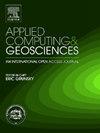3D hydrostratigraphic and hydraulic conductivity modelling using supervised machine learning
Abstract
Accurately modeling highly heterogenous aquifers is one of the big challenges in hydrogeology. There is a pressing need to develop new methods that transform high-resolution data into hydrogeological parameters representative of such aquifers. We use random forest-based machine learning to predict the distribution of hydrostratigraphic units and hydraulic conductivity (K) at a regional scale. We used lithologic logs from >2000 boreholes and resistivity-depth models from 2717 km of Airborne Electromagnetics (AEM). Eighty unique lithologic categories are lumped into 5 hydrostratigraphic units. K data is derived from descriptions of grain size and texture. The input data are resampled into a 200 × 200 × 1m grid and split into 70% training and 30% validation. K prediction had a training F1 score of 95% and 87% testing accuracy. After hyperparameter tuning these scores improved to 99.6% and 92%, respectively. Hydrostratigraphic unit prediction showed a training F1 score of 97% and 91% testing accuracy, improving to 100% and 95% after hyperparameter tuning. This method produces a high-resolution 3D model of K and hydrostratigraphic units that fills gaps between widely spaced boreholes. It is applicable in any setting where boreholes and AEM are available and can be used to build robust groundwater models for heterogeneous aquifers.

 求助内容:
求助内容: 应助结果提醒方式:
应助结果提醒方式:


